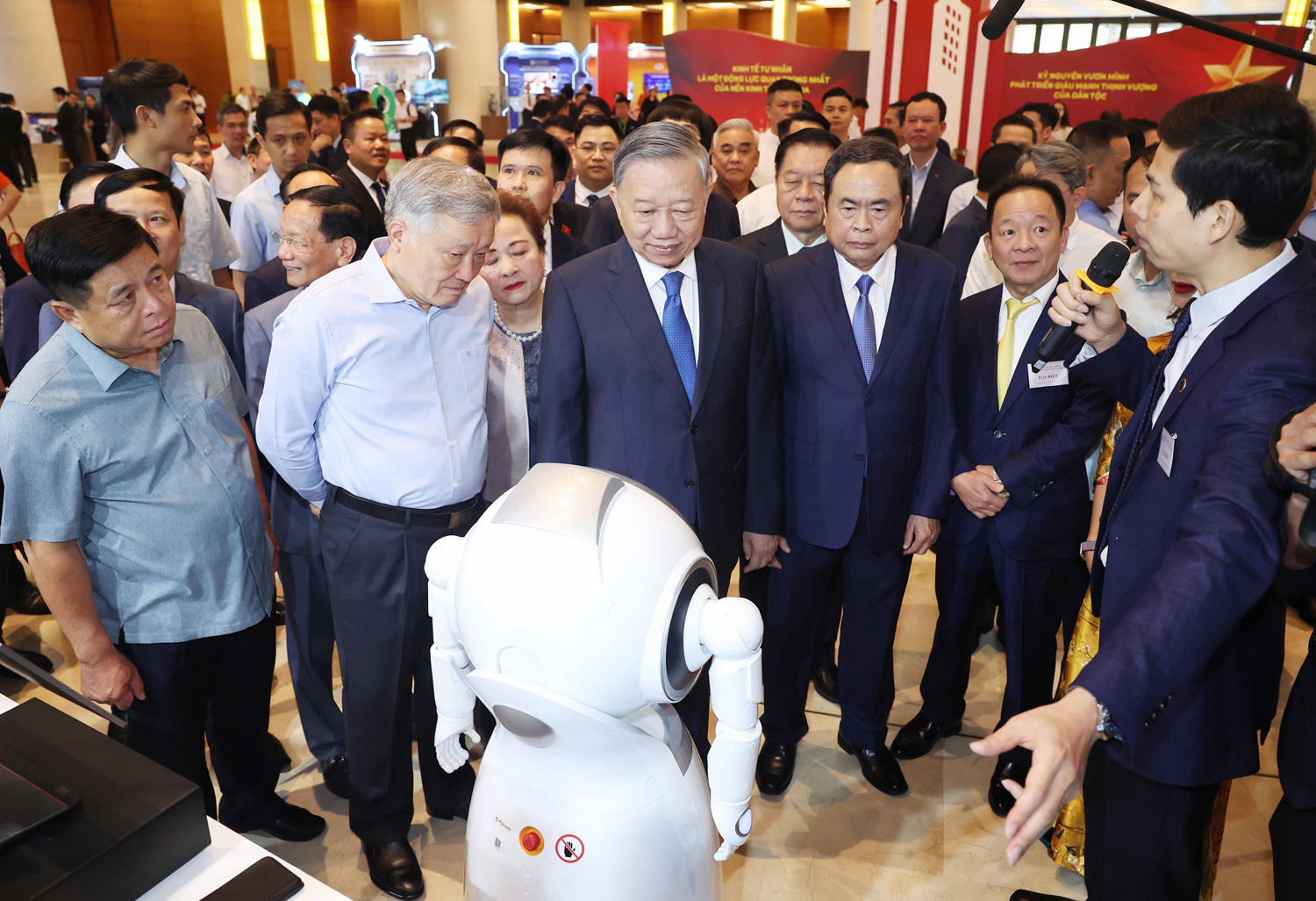
During the 40 years of implementing the renovation process, Vietnam's integration into the world economy has become increasingly deep and wide, taking place in parallel with the wave of the Fourth Industrial Revolution and the strong development of digital transformation, characterized by data, technology and digital platforms. This context not only promotes changes in the growth model, but also poses an urgent need to restructure the economy towards modernity, inclusiveness and sustainability. The important issue in this process is the transformation of productive forces, which in turn leads to the adjustment of production relations. In the article: "Digital transformation - an important driving force for developing productive forces, perfecting production relations, bringing the country into a new era" (1) , General Secretary of the Central Executive Committee of the Communist Party of Vietnam To Lam emphasized that productive forces play a decisive role and production relations must be continuously adjusted to suit the new level of development. When production relations fall behind, they will become an obstacle to the overall development.
The new context poses theoretical requirements to continue researching and clarifying the scope, content, and interaction methods of some traditional concepts and categories, such as "means of production", "labor" or "ownership", while redefining the roles of the State, enterprises and workers in the structure of modern production relations. Many new questions arise: Who owns the data? Who controls the digital platform? What is the role and position of workers and the relationship between workers and employers in the digital economy? How should production relations adapt when the productive forces change profoundly in structure, form and operation?
Theoretical basis of productive forces and production relations in the digital age
In the flow of human history, the development of society is always associated with fundamental changes in the mode of production and behind that change is the restructuring of productive forces and production relations. Marxism - a revolutionary doctrine, considers the pair of categories "productive forces - production relations" as the center to explain the law of motion of history. Entering the digital age, when the world economy shifts strongly towards digitalization, dataization and automation, the creative and dialectical application of this theoretical system becomes urgent. This is an important basis to help correctly identify the nature of changes in production structure, and at the same time guide the building of policies and strategies for social development in the new context.
Marxist theory of productive forces and production relations
In the theoretical system of C. Marx, productive forces and production relations reflect the internal structure of the mode of production, the decisive factor in the nature, level and development trend of society. The dialectical relationship between these two factors is the basis for explaining the movement of human history through successive socio-economic forms. According to C. Marx, productive forces are the entire practical capacity of humans in the process of transforming nature to produce material wealth. Productive forces include means of production (labor tools and labor objects), workers and the level of application of science and technology in production. In which, labor tools are considered the "measure" of the development level of productive forces in each historical period. Production relations are the total economic relations between people arising in the production process, including ownership relations over means of production, organization and management relations of the production process and product distribution relations. Production relations are objective, do not depend on subjective will and are the inevitable result of the level of development of productive forces in each historical period.
According to the law of motion of the mode of production, the productive forces play a decisive role in the relations of production and when they develop to a certain level, they will make the existing relations of production obsolete, hindering production, thereby inevitably leading to their replacement by a new, more progressive relations of production. C. Marx said: "At a certain stage of development, the material productive forces of society come into conflict with the existing relations of production... From being forms of development of the productive forces, those relations become their shackles. Then begins the period of social transformation" (2) . However, the relationship between the productive forces and the relations of production is not one-way but dialectical, both unified and contradictory, affecting each other. In many cases, the relations of production can create a favorable environment, organization and distribution for the development of the productive forces. But when the production relations become “shackles” that restrain the productive forces, the need to improve the production methods becomes an objective necessity. Another important contribution of Karl Marx is the emphasis on the role of the scientific and technological revolution as a direct driving force for the leap forward of the productive forces. In “Capital” and his later works, Karl Marx showed a vision that went beyond the previous ones by paying special attention to the impact of machinery, automation and division of labor in the factory on labor productivity, class structure and labor relations. This shows the openness of Marxism and shows that Marxism can adapt to new forms of production, beyond the framework of mechanical industry.
“Evolution” of productive forces in the digital age
In the digital age, the productive forces have undergone profound changes in both structure, form and operation. If in the industrial period, the center of the productive forces was tangible labor tools, such as machines, mechanical chains or electrical systems, now that role is gradually being replaced by data, artificial intelligence, digital platforms and digital technology. These new factors are reshaping the way production is organized and the division of labor on a global scale.
With its outstanding characteristics of unlimited replication, instant distribution and exponential accumulation, data has become an indispensable input in most socio-economic activities. Unlike traditional means of production, which are scarce and limited, data is not only a by-product of the production and consumption process, but is increasingly becoming a core resource that creates competitive advantage in the global value chain. From the perspective of Marxist political economy, the rise of data as an immaterial means of production requires expanding the concept of “labor tools” and reconsidering the mechanism of surplus value formation in new conditions, when the application of algorithms, automated systems and artificial intelligence helps create higher labor productivity than direct labor. In parallel with data, the application of technology, such as artificial intelligence (AI), the Internet of Things (IoT), blockchain and digital platform ecosystems are creating a new form of productive forces. Three prominent features of this form can be identified as follows: 1- Knowledge is gradually automated, machines no longer only replace manual labor, but have partially recreated the functions of thinking, analyzing and making decisions; 2- The production process takes place according to the "platformization" mechanism, activities are organized through intermediate digital infrastructure (e.g. Amazon, Grab, Airbnb) - the subject does not directly own the physical means of production, but controls the flow and distribution of value in the production chain; 3- Today's production model tends to be connected, decentralized and flexible, operating beyond the physical boundaries of factories, businesses or even countries. Along with data, technology applications, such as artificial intelligence (AI), the internet of things (IoT), blockchain and digital platforms are contributing to shaping a new form of productive forces.
These changes entail a profound shift in the roles and modes of participation of workers. While in the industrial era, most workers performed only repetitive tasks with machines, in the digital economy, they become designers, monitors, analyzers and optimizers of digital systems. Labor capacity is more closely linked to data, algorithms and technology, requiring logical thinking, understanding of automated systems and the ability to adapt to the immaterial production environment. Workers today interact not only with machines, but also with decision-making systems based on big data and digital platforms. The “hybridization” of human and technology in the new form of productive forces creates unprecedented characteristics, value can be created without tangible means of production, production processes can operate outside the scope of conventional physical space and the division of labor takes place in almost real time, across borders through cloud infrastructure and connection platforms. The process of dematerialization of productive forces is becoming evident, forming a type of production organization that goes far beyond the traditional concept of tools or mechanical chains.
Transformation of modern production relations
Along with the transformation of productive forces in the digital age, production relations, which are forms of economic organization reflecting the level of development of productive forces, are also undergoing structural changes. Core elements such as ownership forms, labor organization, distribution mechanisms and management methods are increasingly reshaped by the rise of data, digital platforms, artificial intelligence and cross-border production networks. Unlike the slow transformation process following the traditional industrial cycle, the transformation of production relations in the new context is taking place at a fast pace, with high complexity and unprecedented multi-dimensional aspects.
Platform Capital and Immaterial Control: A prominent feature in the picture of contemporary production relations is the emergence and spread of the “platform capitalism” model. In this form, instead of investing in and directly holding tangible means of production, such as land, factories or raw materials, enterprises focus on dominating digital platform systems, which act as intermediaries to organize interactions between users, suppliers and market forces. The core of this mechanism is that production power is no longer tied to material tools, but to immaterial factors, such as algorithms and data. Data on user behavior is collected and processed to not only personalize services, but also forecast trends, guide behavior, and even influence the decisions of customers, partners and workers. In the view of C. Marx, this is an extended form of exploitation, the surplus value comes not only from material labor, but also from data, interactive time funds and human cognitive energy - areas previously outside the scope of analysis of classical political economy.
Decentralized production networks and restructuring of economic power: Along with the process of dematerialization, production organizations in the digital age are also shifting to a decentralized and networked model. Production activities are no longer confined to the linear chain of a factory or fixed complex, but are managed in many functional clusters, performed by independent entities, but are closely connected through digital platforms. For example, a technology product today can be designed in the US, programmed in India, manufactured in Vietnam, assembled in Thailand, connected for global promotion via TikTok and distributed via Amazon. This new network model has fundamentally transformed ownership and governance relations in production, control over the production process no longer depends primarily on holding physical means of production, but on control over infrastructure, data flows and connections. In this structure, a few global technology corporations hold a dominant advantage thanks to their ability to coordinate markets, influence consumer behavior and shape the distribution of value chains. In contrast, the majority of small and medium-sized enterprises, along with their workers, are dependent on “black box algorithms” that they have no access to or control over. This is the concentration of soft power in a distributed production system, where the center of power shifts from the factory to the software, platforms and databases. The result is the formation of a “digital production superstructure” in which the owners of platforms and algorithms can appropriate a volume of surplus value far beyond their actual physical production capacity, a form of surplus value appropriation through digital intermediation.
Transformation in labor relations, platform labor and algorithms: Another important transformation is the shift in the model of labor relations, from stable and formal forms to flexible, informal and algorithmically coordinated labor. Gig work, freelance work and remote work are gradually becoming the mainstream trend in many industries. Traditional labor relations structures, which rely on long-term contracts, rights protection mechanisms and clear organizational frameworks, are being replaced by flexible forms of work, which are less institutionally based and have no channels for collective dialogue. Despite being called “freedom”, workers are in fact tightly controlled through hidden criteria, star rating systems and customer feedback, making freedom a new form of dependence. This is a form of “self-management through surveillance”, in which individuals are forced to follow one-way rules, without negotiation, without explanation and without feedback mechanisms. A big challenge is how to protect the rights of workers working through the digital environment?
Rising inequality and the emergence of a “new digital class”: A profound social consequence of the shift in modern production relations is the rise of social polarization and digital inequality. Groups that are able to embrace technology, control data, and adapt to the digital production environment will increasingly capture a large share of the newly created surplus value. Conversely, workers who lack digital skills, are not trained and retrained, or live in “digital white” areas are at risk of being pushed to the margins of global value chains. This creates the risk of a “digital underclass,” a social group that is both exploited through digital platforms and not fully guaranteed basic social rights.
Overall, production relations in the digital age are being restructured in a more flexible, decentralized, but at the same time more unequal direction. In this context, Marxism with its dialectical analysis and critical spirit still retains its value as an important reference frame to identify and explain the new contradictions arising in production relations in the data and digital age. On that basis, building an institutional system suitable for the new production structure, ensuring fairness, sustainability and control, becomes a strategic task for every country.
Current status of development of productive forces and production relations in Vietnam today
Developing productive forces in Vietnam today
In Vietnam, a new form of productive force is taking shape based on the combination of digital technology, data, artificial intelligence and the innovation ecosystem, creating material and technical conditions different from previous periods. However, this process is uneven and is influenced by institutional factors, the market, human resource quality and development space.
Firstly, regarding digital infrastructure, the new material foundation of the productive forces. If in the past the productive forces were associated with factories, machines and mechanical equipment, now the material foundation is mainly the digital infrastructure system, including broadband telecommunications networks, data centers, cloud computing, edge computing and high-performance computing capacity. By the end of 2024, more than 75% of the population will use the internet, 74% of households will have fixed broadband connections, and 100% of communes/wards will have 4G coverage. Large corporations such as VNPT, Viettel and FPT are investing heavily in 5G networks, level 4 data centers and cloud computing infrastructure, contributing to building the material foundation for digital production.
Second, about data and platforms - new "means of production" in the digital economy. Data, with its infinitely renewable nature, near-zero marginal cost and ability to generate exponential profits, is considered the "new oil" of the 21st century. In 2023, the National Assembly passed the Law on Electronic Transactions (previously the Law on Electronic Transactions of 2005). In 2024, the National Assembly passed the Law on Data, and in 2025, it passed the Law on Digital Technology Industry and the Law on Personal Data Protection - important legal documents for digital transformation.
Third, on artificial intelligence and technology - the new "labor force". In Marxist theory, labor is the central factor in turning means of production into products. However, in the digital environment, more and more production activities are automated thanks to algorithms, software and AI systems, causing "living labor" to be gradually replaced by "machine learning labor". Vietnam has made many efforts in applying AI in the fields of finance - banking, e-commerce, logistics and healthcare. Currently, Vietnam is only ranked 59/193 countries according to the "Government AI Readiness" index with 54.48 points, ranking 5th in the Association of Southeast Asian Nations (ASEAN) (3). Most businesses have only stopped at the testing level, while data infrastructure, computing capacity and AI human resources are still challenges to be solved.
Fourth, on digital knowledge and skills - the human factor in the productive force. In a knowledge economy, human knowledge and creative skills are the key pillars. Workers now not only need simple mechanical labor skills, but also must be proficient in digital skills, such as data analysis, smart system operation, design thinking and multi-platform communication. According to a report by the World Economic Forum, the rate of Vietnamese workers possessing basic digital skills is still lower than the ASEAN average. Meanwhile, the education system, especially vocational and university training, is still slow in incorporating digital skills, AI and data science into the main curriculum.
Fifth, regarding digital space and dynamic regions, the new “geography” of production. In the industrial era, the productive forces were associated with industrial parks and centralized factories. Today, the productive space has expanded to digital space, cloud and online platforms, although geography still determines the distribution of resources. Large cities such as Hanoi, Ho Chi Minh City, Da Nang and Bac Ninh are gradually forming “digital productive force clusters” with a leading role. In contrast, the Northwest, Central Highlands and Southwest regions still lack infrastructure, human resources and support policies, increasing the gap between regions.
Current status of production relations
In the process of socio-economic development, Vietnam has proactively adjusted production relations to suit the development requirements of the productive forces, especially in the period of innovation, integration and before the profound impact of the Fourth Industrial Revolution. However, production relations still reveal some limitations, which need to be analyzed on three levels, including ownership relations, organization-management relations and distribution relations.
First, on the ownership of means of production. Vietnam maintains a mixed ownership model with three main forms: public ownership (with the State representing the owner), collective ownership and private ownership. In which, the private sector and the foreign-invested sector increasingly play a driving role in developing productive forces and technological innovation. However, the accumulation and concentration of means of production to form large enterprises capable of leading the value chain is still limited. Meanwhile, the public ownership sector through state-owned enterprises still holds a leading position in essential industries, but the efficiency of exploiting means of production (especially land, capital, and resources) is not commensurate.
Second, on the relationship between production organization and management. The transition to a socialist-oriented market economy has created a diverse production organization ecosystem, from state-owned enterprises, private enterprises, foreign direct investment (FDI) enterprises, cooperatives, to digital platforms and sharing economic models. However, the capacity to transform from traditional governance models to modern governance based on data, digital technology and network connections is still slow. State-owned enterprises face a number of challenges in innovation and improving the efficiency of the governance system, limiting the role of state-owned enterprises in pioneering and leading in the formation and expansion of domestic, regional and global production, supply and value chains; the private sector, especially small and medium-sized enterprises, still has limitations in accessing digital infrastructure, data platforms and skills to reorganize production according to digital models. In particular, the new labor relations arising in platform labor or remote work are requiring a new governance model. This requires adjustments to the legal framework and labor management mechanisms to adapt to the new form of production.
Third, on the distribution of labor products. Vietnam currently applies a distribution mechanism based mainly on a regulated market, but the income gap between population groups, regions, and industries and occupations is still widening. The middle class is growing rapidly, but a large part of the labor force, especially in the informal and rural sectors, has not yet fully enjoyed the fruits of growth. In the digital economy, the benefit distribution system still has many limitations. Personal data, an important form of digital assets, has not been fairly valued and distributed; platform workers have not been guaranteed minimum income and social benefits commensurate with the value they create for digital platforms.
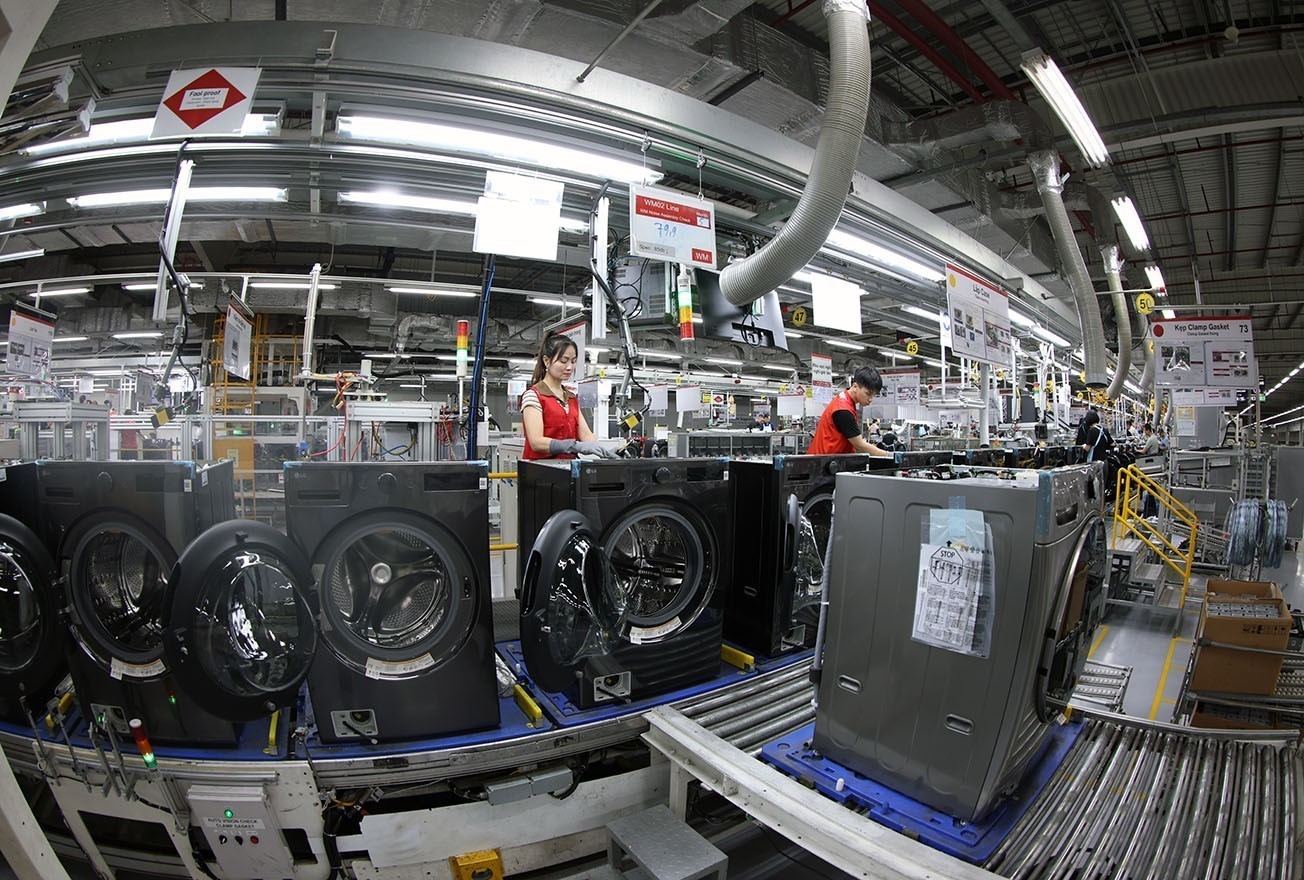
Outstanding features and trends in restructuring productive forces and production relations in Vietnam in the digital age
In recent years, the productive forces and production relations in Vietnam have been undergoing a process of profound restructuring, and this transformation is clearly demonstrated through three prominent characteristics and main trends.
Firstly, the shift in the structure of production forces towards digitalization and knowledgeization. Technology level, especially digital technology, becomes a key factor determining labor productivity and national competitiveness. The scale of Vietnam's digital economy in 2024 will reach about 18.3% of gross domestic product (GDP), with an annual growth rate of over 20%, three times higher than the GDP growth rate in general and among the fastest in Southeast Asia. Retail e-commerce will reach about 25 billion USD, up nearly 20% over the previous year. Non-cash payments maintain a growth rate of over 50%/year, leading ASEAN (4). Digital economic sectors, such as e-commerce, digital finance, smart logistics, and financial technology (fintech), are creating new "dynamic zones" for growth.
Second, the restructuring of production relations is reflected in new differentiation in ownership, organization and distribution. The forms of ownership of means of production are increasingly diverse, including not only state or private ownership, but also the emergence of new models, including intellectual property, data ownership, equitization, sharing platforms, flexible labor and non-traditional forms of organization, such as blockchain or decentralized autonomous organizations (DAOs). The process of organizing production through digital platforms makes labor relations flexible, short-term and informal, posing urgent requirements for innovation in legal institutions, social security policies and labor management.
Third, the application of breakthrough scientific and technological achievements, such as big data, artificial intelligence (AI), cloud computing, biotechnology, robotics and automation, and the Internet of Things (IoT), has led to the formation of new forms of productive forces. These factors not only act as production tools, but also become central means of production, even dominating new industries. In particular, data, which was not previously considered a means of production, has now become an essential "fuel" for the digital economy. Vietnam has issued a National Data Strategy, passed the Data Law, the Personal Data Protection Law, and the Digital Technology Industry Law, and established a National Data Center, demonstrating the strategic role of data in the modern production structure./.
--------------------------------
(1) Prof. Dr. To Lam: “Digital transformation - an important driving force for developing productive forces, perfecting production relations, bringing the country into a new era”, Electronic Communist Magazine, July 25, 2025, https://www.tapchicongsan.org.vn/media-story/-/asset_publisher/V8hhp4dK31Gf/content/chuyen-doi-so-dong-
(2) C. Marx and F. Engels: Complete Works, Truth Publishing House, 2011, vol. 1, p. 21
(3) Hoang Giang: Vietnam ranked 5th in ASEAN in terms of global AI readiness index, Government Electronic Newspaper, July 25, 2025, https://baochinhphu.vn/viet-nam-xep-thu-5-trong-asean-ve-chi-so-san-sang-ai-toan-cau-102240116173427249.htm
(4) Ha Van: Vietnam's digital economy is growing the fastest in the region, Government Electronic Newspaper, July 25, 2025
Source: https://tapchicongsan.org.vn/web/guest/kinh-te/-/2018/1141502/cau-truc-lai-luc-luong-san-xuat-va-chuyen-doi-quan-he-san-xuat-trong-ky-nguyen-so--tiep-can-ly-luan-mac-xit-va-ham-y-chinh-sach-%28ky-i%29.aspx













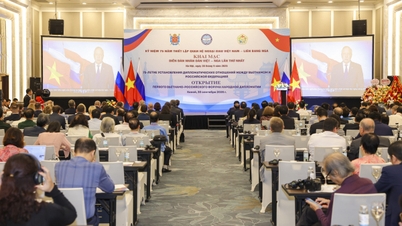




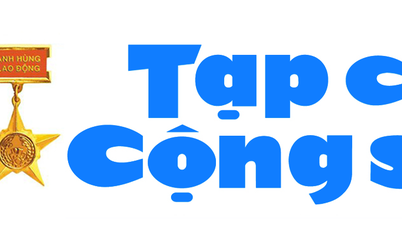






![[Photo] The 1st Congress of Phu Tho Provincial Party Committee, term 2025-2030](https://vphoto.vietnam.vn/thumb/1200x675/vietnam/resource/IMAGE/2025/9/30/1507da06216649bba8a1ce6251816820)
![[Photo] President Luong Cuong receives President of the Cuban National Assembly Esteban Lazo Hernandez](https://vphoto.vietnam.vn/thumb/1200x675/vietnam/resource/IMAGE/2025/9/30/4d38932911c24f6ea1936252bd5427fa)
![[Photo] Panorama of the cable-stayed bridge, the final bottleneck of the Ben Luc-Long Thanh expressway](https://vphoto.vietnam.vn/thumb/1200x675/vietnam/resource/IMAGE/2025/9/30/391fdf21025541d6b2f092e49a17243f)

![[Photo] Solemn opening of the 12th Military Party Congress for the 2025-2030 term](https://vphoto.vietnam.vn/thumb/1200x675/vietnam/resource/IMAGE/2025/9/30/2cd383b3130d41a1a4b5ace0d5eb989d)












































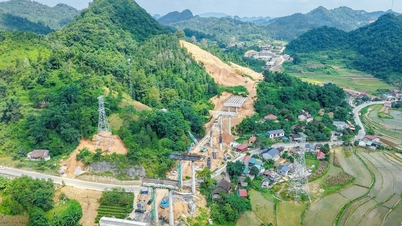























Comment (0)